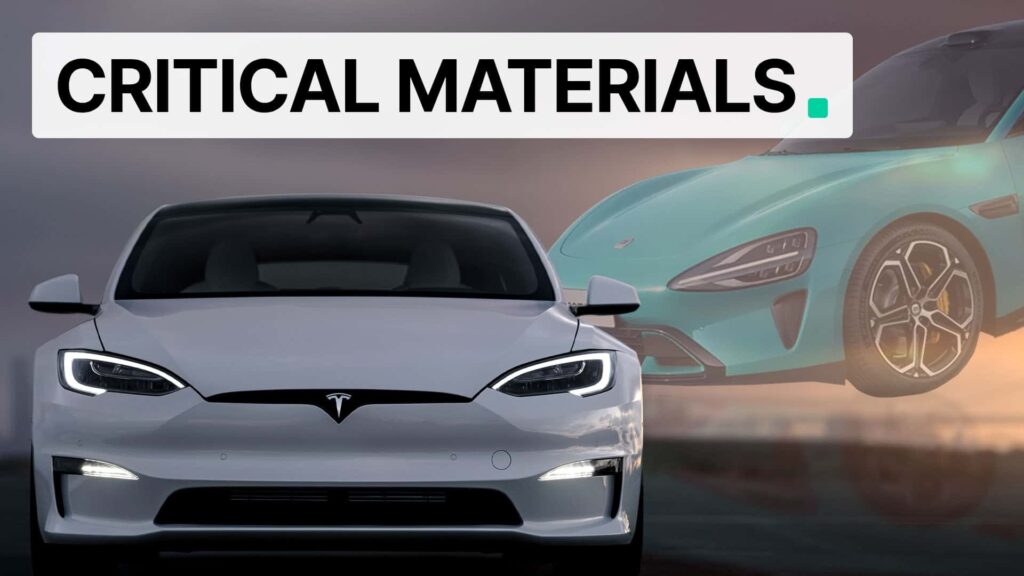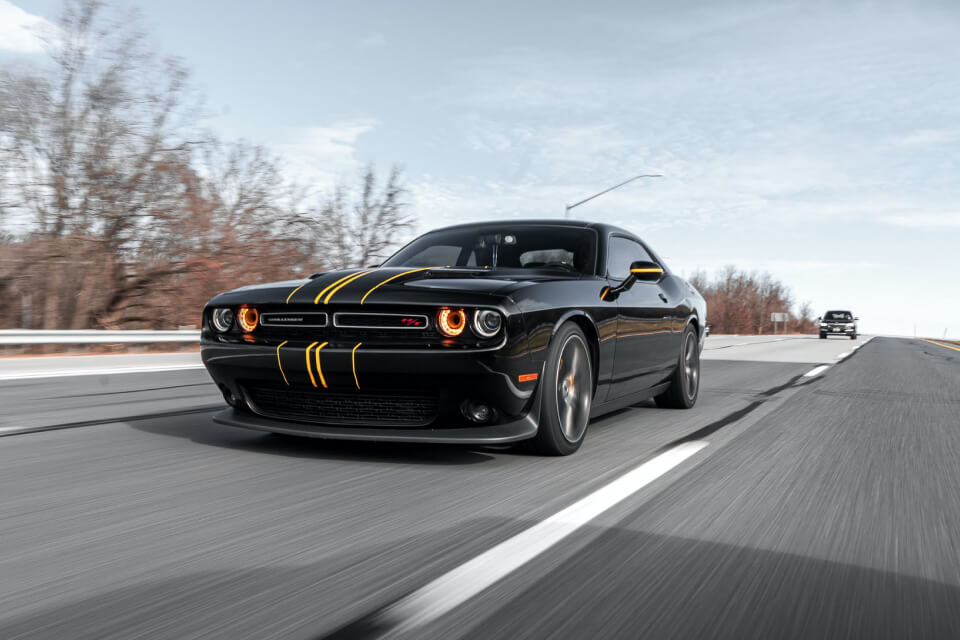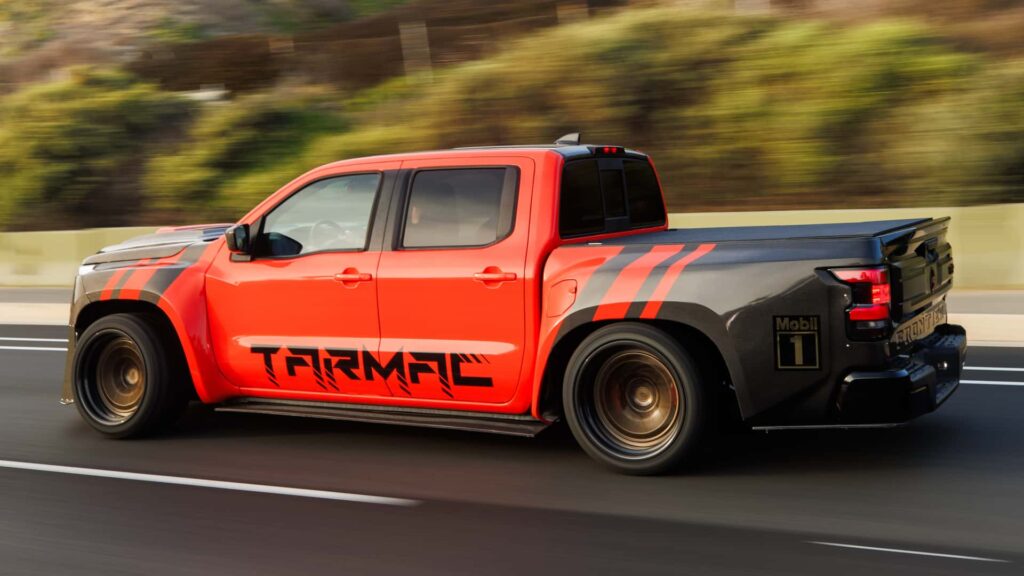
Ah, self-driving. The promise of kicking back and letting your car do all of the heavy lifting from point-a to point-b while you doom scroll TikTok or pop a movie on Netflix. It’s a wonderful reality we’ve been sold for years, but no company has made good on it despite some serious innovation in the U.S. However, there’s some serious competition heating up overseas, and automakers are getting very good at autonomy feature-parity—and that could be a problem for Tesla.
Welcome back to Critical Materials, your daily roundup for all things EV and automotive tech. Today, we’re chatting about China’s push for Tesla’s tech crown, Xiaomi’s great success with the SU7, and the death of the American dream (of the $25,000 EV). Let’s jump in.
30%: China’s ‘Smart Cars’ Are Coming For Tesla
You’ve probably never heard of the Guangzhou auto show—and that’s okay. You needn’t even have thought of it before today. All you need to know is that Chinese automakers are using this year’s show to make something extremely clear: Tesla’s throne is in everyone’s sights.
Chinese auto giants are closing out 2024 by flexing their tech muscles at this year’s show in China’s auto capital of Guangdong. Company after company, including newcomer Xiaomi, is debuting the latest versions of their in-car tech that promises to put a hamper on the tech-first lead that Tesla has worked so hard to build.
Xiaomi debuted its “parking spot to parking spot” feature, which, much like Tesla’s Full Self-Driving feature, is an end-to-end model trained by AI and meant to all but chauffeur the driver. Xiaomi’s promotional material showed off on-screen visualizations, navigating complex environments, and auto parking—oh, and there’s a 360-degree overhead camera view, too. Xiaomi’s Chairman, Lei Jun, also live-streamed a test drive where he explained just how important it was for Xiaomi to implement a Tesla-like feature to remain competitive:
“Parking spot to parking spot means starting from a parking spot to the one at the destination, using smart driving the whole way,” said Lei. “This technology is magical. It’s also the most advanced technology in assisted driving today. It was first released by Tesla in the US in January. Our peers in China all have started to try to catch up in this new frontier.”
Geely’s premium EV brand, Zeekr, also knew that it had to show off its own flavor of catching up. It debuted its own updated end-to-end advanced driver assistance feature, dubbed Smart Driving 2.0, which is said to bring urban navigation to the fleet by the end of the year.
Xpeng, Li Auto, and Great Wall Motor all also showed off AI-powered driver assistance systems in Guangzhou.
It’s important to point out that not all driver assistance systems are created equal. If they were, it wouldn’t be such an arms race to reach higher and higher levels on the SAE chart. Instead, nearly every modern automaker is sprinting towards reaching the target first, with Tesla believing it can outpace industry veterans like Cruise and Waymo here on U.S. soil.
So what’s the takeaway here? Tesla has some serious competition coming from overseas just when the automaker has begun to plan FSD’s launch outside of the U.S. So Tesla is now in a predicament: it has more rivalry in the EV space and self-driving space than ever, and the speed at which these automakers are pushing forward with their own tech is extremely rapid. Can Tesla beat them to the bunch? For Tesla’s sake, hopefully—especially since 77% of its $1 trillion stock valuation relies on just that.
60%: Xiaomi Is Laughing All The Way To The Bank As It Raises SU7 Production Target (Again)
Photo by: Xiaomi
Smartphone maker Xiaomi has been absolutely slaying the EV game with the eclectic SU7. Starting at just $30,000, the SU7 has been wildly successful, selling every single unit that Xiaomi puts on the market. That’s impressively lucrative for an electronics company that just started drumming up the idea of launching a car in 2021.
The SU7 officially launched just ten months ago, in December 2023. Since then, the electronics giant has upped its production target from 76,000 units to 120,000. An impressive goal considering the timeline, but now Xiaomi thinks that it can smash that record and has upped its mission to 130,000 units by the end of the year.
In case you missed it last week, Xiaomi surpassed 100,000 units of the SU7 built—and it did it in absolute record time. It took half the time that Tesla took to build 100,000 examples of the Model 3 (granted, it has BAIC as a production partner here). To reach 130,000 units by the end of the year, Xiaomi had to raise its production target from 408 units per day to 612 units per day (nearly 50%) after it hit that milestone.
If Xiaomi can keep that pace up and still sell every unit it produces, it’s pretty much game over until the public loses interest in the car.
That being said, Xiaomi’s auto business is still operating at a net loss, but not by much. The company’s cars stand to lose the business around $207 million for the year, which seems like a lot until you factor in the number of cars that it sold. Overall, that works out to just a hair under $1,600 per unit, and at a 17.1% profit margin, it’s only a matter of time until Xiaomi works out the kinks.
Chinese brokerage firm Huatai Securities estimates that Xiaomi will sell around 400,000 EVs in 2025. That number will effectively raise its EV business unit to account for around 20% of Xiaomi’s revenue versus the 8% that it brought in so far for 2024.
And, yeah, it already has a Tesla Model Y fighter in the works.
90%: The American Dream Of The $25,000 EVs Is Dying
Photo by: InsideEVs
A white picket fence and a clean-running $25,000 EV in every American driveway. What a dream, am I right? It seemed so real just a few years ago, but with Tesla throwing in the towel, tariffs locking out cheap overseas competition, and the president-elect seemingly allergic to the EV tax credit, the notion of the cheap EV is looking more like a museum-bound relic than the combustion engine these days.
We could spin the “why” a thousand different ways, but for automakers, avoiding a cheap EV is like avoiding the plague: great for business. If you don’t believe me, just ask Lucid CEO Peter Rawlinson who spelled out the why extremely bluntly to the Wall Street Journal.
“That market sucks,” said Rawlinson in an interview with WSJ’s Bold Names podcast. “That market is notorious because you get into mass manufacture—terrible, low margins. To install the manufacturing base for millions of these units makes little sense to me.”
Rawlinson’s comments are akin to Tesla CEO Elon Musk’s feelings on the topic. He called the work needed to build a low-cost car “excruciating” and that cutting the last 20% out of a car’s price can be harder than building an entire factory. To put it simply, the juice isn’t worth the squeeze.
Cars are also getting astronomically expensive. So, while consumers are looking for the price to go down, the actual cost of manufacturing is going way up. And it’s reflected in the price that Americans are paying for their new cars.
The average purchase price of a new vehicle—any new vehicle, not just an EV—sold in the U.S. during October was $48,623. That’s about $10,000 higher than it was pre-pandemic in 2019. In 2014, around 40% of new cars racked up a $25,000 sale. When accounting for inflation, that’s around $33,750 in 2024 bucks. This year? Only 9% of transactions were that low.
It turns out that when automakers needed to maximize profits during Covid-era shortages, the first things that went were low-margin cars. That meant peddling more SUVs, pickups, and luxury mobiles to pad profits while minimizing the number of components spread across models. It makes sense from a business standpoint, but it was also one of the key drivers of inflation.
So here we are heading into 2025 with new vehicle prices reaching a record high, the EV tax credit on the chopping block, and protectionist tariffs to prevent overseas brands from dumping cheap competition on the Big Three’s doorstep. Meanwhile, automakers like Tesla have jumped ship on promises of the $25,000 EV (despite claiming that the media’s reporting of its intentions was false). Is the American auto industry’s dream of the cheap EV dead? It sure seems like it, at least for now.
100%: Will China Beat The U.S. In The Self-Driving Race?
Photo by: InsideEVs
You know, we’ve been so focused on which American company will be the first to offer a fully self-driving car in the U.S. that most of us haven’t considered just how far other countries are in the same race. China, in particular, has been picking up pace considerably, as made evident by the recent auto show in Guangzhou. It’s actually a bit eye-opening to think about how rapidly these other automakers are coming at America’s top tech talents.
And there’s no shortage of companies throwing cash at the self-driving fire. Tesla, Waymo, Cruise, Nvidia, Aurora, Baidu, Zoox, Nuro. I could go on and on. Every company knows that the first one to reach the goal is going to make a lot of folks rich—so some friendly competition is going to create innovation.
Now that China is putting pressure on the U.S., there’s a very real chance that it could beat America to a true self-driving car in the driveway of the average consumer. Do you think that the U.S. still has a leg-up on the competition, or are there some serious challenges ahead between overseas tech rivals? Let me know in the comments.


